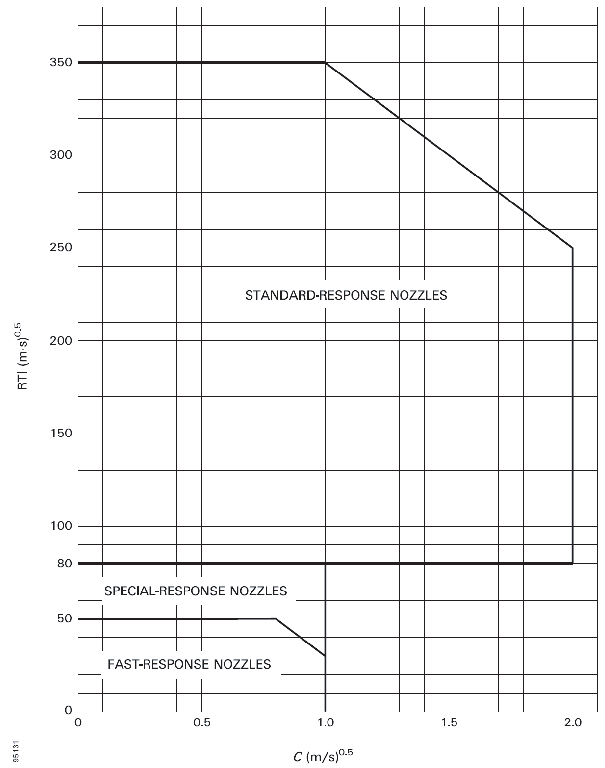4.14.1 Automatic nozzles intended for installation
in other than accommodation spaces and residential areas should comply
with the requirements for RTI and C limits shown in Figure 1. Automatic nozzles
intended for installation in accommodation spaces or residential areas
should comply with fast response requirements for RTI and C limits
shown in Figure 1. Maximum
and minimum RTI values for all data points calculated using C for
the fast and standard response nozzles should fall within the appropriate
category shown in Figure 1.
Special response nozzles should have an average RTI value, calculated
using C, between 50 and 80 with no value less than 40 or more than
100. When tested at an angular offset to the worst case orientation
as described in 5.6.2, the
RTI should not exceed 600 (m.s) 0.5 or 250% of the value
of RTI in the standard orientation, whichever is the less. The angular
offset should be 15° for standard response, 20° for special
response and 25° for fast response.

Figure 1 RTI and C limits for Standard Orientation
4.14.2 After exposure to the corrosion test described
in section 4.11.2, 4.11.3 and 4.11.4, nozzles should be tested
in the standard orientation as described in 5.6.2.1 to determine the post exposure
RTI. All post exposure RTI values should not exceed the limits shown
in Figure 1 for the appropriate
category. In addition, the average RTI value should not exceed 130%
of the pre-exposure average value. All post exposure RTI values should
be calculated as in 5.6.2.3 using
the pre-exposure conductivity factor (C).